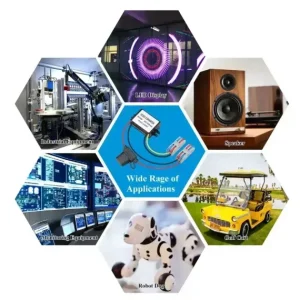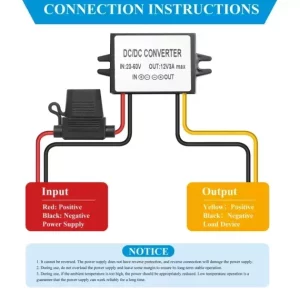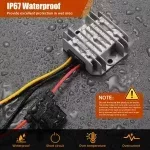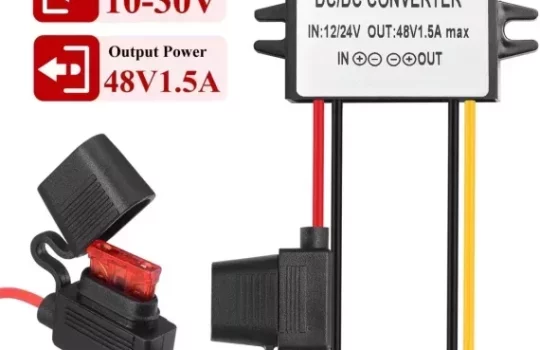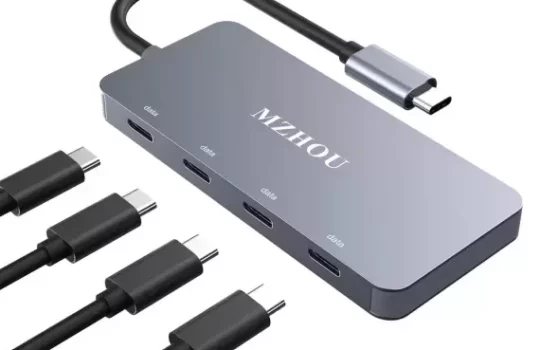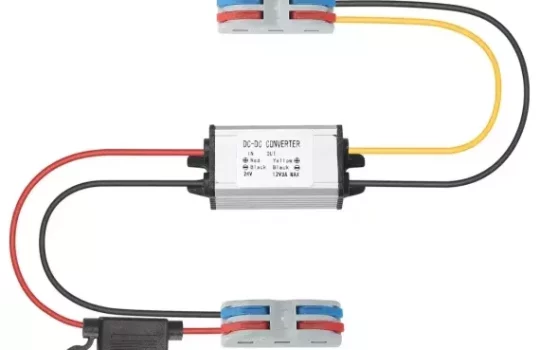A DC step-down converter, commonly referred to as a buck converter, is an essential component in modern electronic systems designed to efficiently reduce a higher DC input voltage to a lower DC output voltage. Unlike simple resistive voltage dividers or linear regulators, a buck converter employs high-frequency switching and energy storage elements to achieve significant improvements in energy efficiency, compactness, and thermal performance.
Fundamental Operating Principle
A buck converter primarily uses two key electronic components: an inductor and a switching device, typically a transistor such as a MOSFET. The basic operation involves rapid switching of the transistor between on and off states, controlling the flow of energy through the inductor. When the switch is closed (on-state), current flows from the input source through the inductor, storing energy in its magnetic field. When the switch opens (off-state), the inductor releases its stored energy, maintaining the current to the load while the input is temporarily disconnected.
By adjusting the ratio of the switch’s on-time to off-time, known as the duty cycle, the average output voltage can be precisely controlled. Mathematically, the output voltage VoutV_{out} relates to the input voltage VinV_{in} and the duty cycle DD as:
Vout=D×Vin
where 0<D<10 < D < 10<D<1.
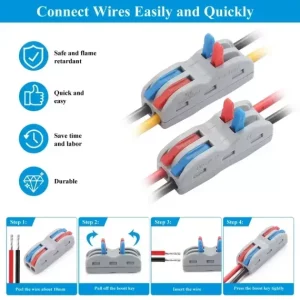
Core Components of a DC Step-Down Converter
- Switching Element (Transistor): Acts as a fast electronic switch, toggling between conducting and non-conducting states under the control of a pulse-width modulation (PWM) signal.
- Inductor: Stores energy when current flows through it and releases energy when the switch is off, smoothing out current variations.
- Diode: Provides a path for inductor current when the switch is off (often replaced by a synchronous rectifier in modern designs for higher efficiency).
- Output Capacitor: Filters the output voltage to reduce ripple and provide a stable DC output.
- Control Circuitry: Generates the PWM signal, monitors output voltage or current, and adjusts the duty cycle to maintain regulation.
Advantages of Step-Down Converters
- High Efficiency: Efficiency levels often exceed 90%, especially under optimal load conditions, making buck converters highly suitable for battery-powered and energy-conscious applications.
- Compact Size: By operating at high switching frequencies, the size of passive components like inductors and capacitors can be minimized, leading to more compact designs.
- Thermal Performance: Lower power dissipation compared to linear regulators reduces the need for large heat sinks or active cooling systems.
- Flexibility: Supports a wide range of input and output voltages, and can be designed to handle significant variations in load current.
Common Applications
- Battery Management Systems: In electric vehicles and portable electronics, where it is necessary to supply multiple voltage rails from a single battery source.
- Telecommunication Equipment: Powering different modules with precise voltage requirements.
- Industrial Control Systems: Providing stable lower voltages for microcontrollers, sensors, and actuators.
- Consumer Electronics: In smartphones, tablets, and laptops to regulate power between various components.
Design Considerations
Selecting or designing a DC step-down converter requires careful evaluation of several parameters:
- Input Voltage Range: Must accommodate the maximum and minimum input voltages expected in the system.
- Output Voltage and Tolerance: Determines the regulated output and the acceptable deviation range.
- Load Current Capability: Ensures the converter can supply the maximum required current without thermal or electrical stress.
- Efficiency Goals: Influences component selection and thermal management strategies.
- Switching Frequency: Affects component size, efficiency, and electromagnetic interference (EMI) characteristics.
- Control Methodology: Includes options like voltage-mode control, current-mode control, or hysteretic control, each offering different trade-offs in stability, transient response, and complexity.
Challenges and Limitations
Despite their many advantages, DC step-down converters also come with some challenges:
- EMI Generation: High-speed switching introduces noise that can interfere with nearby sensitive electronics unless properly managed with filtering and shielding techniques.
- Complexity: Requires sophisticated control circuits and careful PCB layout to optimize performance and reliability.
- Dynamic Load Response: Rapid changes in load demand can cause voltage deviations if not properly compensated in the design.
Modern Innovations
Advancements in semiconductor technology and digital control have greatly enhanced the capabilities of buck converters. Features such as:
- Synchronous Rectification: Replacing the diode with a controlled MOSFET to reduce conduction losses.
- Multiphase Operation: Distributing the load current across multiple phases to reduce ripple and improve thermal performance.
- Integrated Solutions: Highly integrated buck converter modules simplify design and reduce time-to-market for complex systems.
A DC step-down converter is a crucial building block in power electronics, offering efficient and flexible voltage regulation in a wide array of applications. Mastery of its operating principles, components, and design considerations is essential for engineers aiming to create high-performance, energy-efficient systems.


